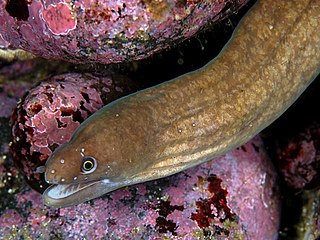
Vallée de Mai Nature Reserve is a nature park and UNESCO World Heritage Site on the island of Praslin, Seychelles. It consists of a well-preserved palm forest, flagship species made up of the island endemic coco de mer, as well as five other endemic palms.

Livingstone's fruit bat, also called the Comoro flying fox, is a megabat in the genus Pteropus. It is an Old World fruit bat found only in the Anjouan and Mohéli islands in the Union of the Comoros in the western Indian Ocean.

The Seychelles skink also known as the Mangouya, is a species of skink in the family Scincidae. It is endemic to the Seychelles.
The Seychelle Islands treefrog or Seychelles treefrog is a species of frog in the family Hyperoliidae. It is endemic to Seychelles. Its natural habitats are subtropical or tropical moist lowland forest, rivers, swamps, freshwater marshes, intermittent freshwater marshes, plantations, rural gardens, heavily degraded former forest, and irrigated land.

The Seychelles bronze gecko is a species of lizard in the family Gekkonidae endemic to Seychelles.

The Seychelles wolf snake is a species of snake in the superfamily Colubroidea. It is monotypic within the genus Lycognathophis. The Neo-Latin name, Lycognathophis, is derived from the Greek words λύκος (lykos) meaning "wolf", γνάθος (gnathos) meaning "jaw", and όφις (ophis) meaning "snake", referring to the snake's dentition.

The Aldabra flying fox is a species of megabat in the genus Pteropus. It is endemic to the Aldabra Atoll in the Seychelles, like Chaerephon pusilla, though the latter may be the same species as the little free-tailed bat.

The Ryukyu flying fox or Ryukyu fruit bat is a species of megabat in the family Pteropodidae. It is found in Japan, Taiwan, and the Batanes and Babuyan Islands of the Philippines. Its natural habitats are subtropical or tropical dry forests and subtropical or tropical swamps. It is threatened by habitat loss and by hunting for food and the IUCN classify it as "Vulnerable".

The lesser flying fox or Sanborn's flying fox is a species of flying fox in the family Pteropodidae. It is found in Papua New Guinea and the Solomon Islands. The species is poorly known, but is believed to inhabit coastal lowlands, including tropical rainforest. Although the species has been found plantations, the habitat of the species is fragmented by increasing agriculture and logging.

The Bonin flying fox, also known as Bonin fruit bat, is a species of flying fox in the family Pteropodidae. It is endemic to four islands of the Bonin Islands group, Japan. Its natural habitat is subtropical forests. It is threatened by habitat loss.

The large flying fox, also known as the greater flying fox, Malayan flying fox, Malaysian flying fox, large fruit bat, kalang, or kalong, is a southeast Asian species of megabat in the family Pteropodidae. Despite its scientific name, it feeds exclusively on fruits, nectar, and flowers, like the other flying foxes of the genus Pteropus. It is noted for being one of the largest bats. As with nearly all other Old World fruit bats, it lacks the ability to echolocate but compensates for it with well-developed eyesight.

The Seychelles sheath-tailed bat is a sac-winged bat found in the central granitic islands of the Seychelles. They are nocturnal insectivores that roost communally in caves. The species was previously abundant across much of the archipelago, but has since seen a substantial loss of habitat. The International Union for Conservation of Nature has listed the species as being critically endangered, due to population decline. This is mainly due to an increase in land development and the introduction of invasive species.

The Makira flying fox is a species of megabat in the genus Pteropus, found in the Solomon Islands. The species is currently decreasing and is endangered due to threats from logging and hunting. In 2013, Bat Conservation International listed this species as one of the 35 species of its worldwide priority list of conservation.

The Rennell flying fox is a species of flying fox found in the Solomon Islands. It is an endangered species risking extinction.

Anarchias seychellensis is a moray eel found in coral reefs in the Pacific and Indian Oceans. It was first named by J. L. B. Smith Smith in 1962, and is commonly known as the Seychelles moray or the marbled reef-eel.
Anapistula seychellensis is a species of araneomorph spider that is endemic to the islands of Silhouette, Praslin and Curieuse in the Seychelles. It can be found in woodland habitats in leaf litter. It is threatened by habitat degradation caused by invasive plant species, especially Cinnamomum verum.
















